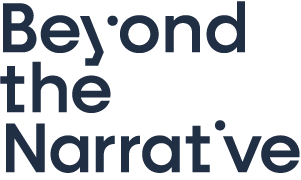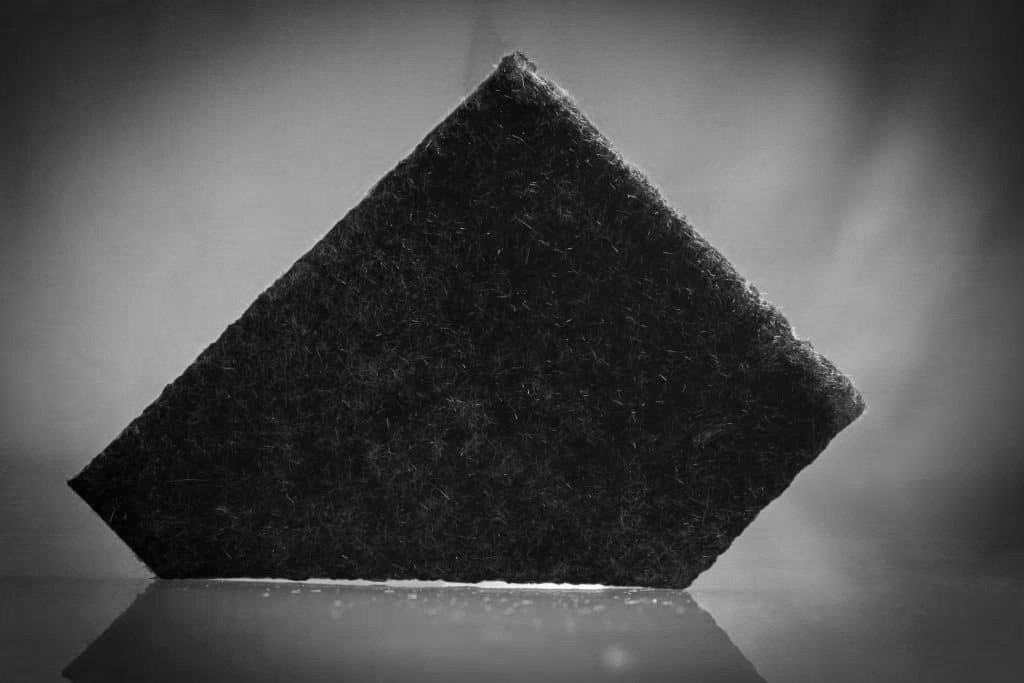A cosmic perspective
While space certainly still operates as a frontier for discovery, it has also become a force for commerce
WHAT HAPPENS IN SPACE, DOESN’T STAY IN SPACE
Where the early years of space exploration were largely seen as a period of adventurous and extremely ambitious pilots and scientists, it is now yet another conduit for our modern telecommunications, just as above-ground telephone and electricity cables, or subterrestrial and submarine internet cables
Space exploration doesn’t only expand our scientific horizons, it provides substantial returns to industry, business and economy
EXPLORATION LEADS TO INNOVATION AND ENTERPRISE
Funnily enough, the spinoffs have proliferated and integrated into society so granularly that they no longer stand out as obvious by-products of space research
NASA Spinoff provides a catalogue of over 2000 NASA-developed technologies that have been adapted to industry and consumer goods via the NASA Technology Transfer Program. Some are more novel and out of sight for most of us, some we interact with every day, and some are about to have huge economic and consumer impacts
Some spinoffs are right under our noses, and even on our tongues
MANUFACTURING AND SPACE FLIGHT SHARE A LOVE FOR EFFICIENCY
Aerodynamic modelling for flight re-entry by the European Space Agency was adapted to food manufacturing
Testing the flight characteristics of potato chips helped to optimize production lines, and filled bags 30-50% faster while preventing chip breakages
Even the reflective and protective food packaging itself stems back to satellite coatings
“Over the last ten years or so, ESA has ‘spun-off’ over 150 separate technological innovations from the space industry into non-space applications.” - European Space Agency
INNOVATIONS IN NUTRITION MADE THEIR WAY TO SUPERMARKET SHELVES
With every inch of space and every extra kilogram counting aboard a cramped shuttle, NASA advanced freeze-drying techniques which led to many of the powdered foods we use today
Given the importance of nutrition for astronauts, they also developed an algae-based vegetable oil which contains two essential fatty acids. In powdered form, it became a core additive in many baby formulas
“Key nutrients used in baby formula were originally developed for astronauts on long-duration, deep space missions.” - CSIRO
And some spin-offs are right above our heads
Originally developed by both NASA and the US Air Force, GPS has become a technology staple in modern societies
Google maps, Apple Maps, Uber, Menulog, Tinder – they are all based off the satellites and software that uses their signals to determine precise locations. GPS also plays a critical role in fintech geolocation security and the ecommerce industry
The commercial flow-on of GPS technologies is estimated to have generated around $1.4 trillion in the USA alone since its introduction in the 1980’s
Farmers even use satellite imagery to keep an eye on their crops within their massive properties, and emergency responders use the same technology to coordinate humanitarian efforts, particularly during natural disasters
The immense contributions of satellite communications are greatly beyond the vision for them at the time. Yet, they have become fundamental to our culture, helping bring forward socio-economic balances, national security, future workforces, economic growth, increased connectivity, and other downstream developments
While the benefits aren’t immediately visible, the investment pays off
ECONOMIC BENEFITS ARE DIFFICULT TO QUANTIFY
It is estimated that the global commercial revenue of the space sector is around 300 billion USD, generated from the 79 billion invested by the G20 countries, not including agricultural, transport and environmental segments
Unfortunately, the indirect nature of positive flow-on effects means that the public often doesn’t realise the benefits of such large investments in space research
“Lengthy time lags between initial investments and realised outcomes…are difficult to quantify (e.g. scientific discoveries, enhanced national security).”
- Organisation for Economic Co-operation and Development, 2020
DEVELOP IT AND THEY WILL COME
The key insight behind all of these spin-offs, is that technologies originally developed by government-funded space agencies are typically advanced by enterprising private companies, eventually becoming the basis for modern products and services of which we all enjoy the benefits
“Investment in space-based endeavours is becoming sufficiently attractive to private entrepreneurs, so that humankind may be ready to "incorporate the solar system in our economic sphere.”
- International Space Exploration Coordination Group, 2013
Other key innovations and applications
AEROGEL FOR COLD CLIMATES
Many apparel companies are including aerogel, an extremely lightweight material, built on a structure of dried gel but is essentially made of air. It’s infused into fibres to create clothing, as well as airtight cases for protecting food and phones
PERSONALISED SLEEP OPTIMISATION
NASA-sponsored research looking into the effect of particular wavelengths of light on our circadian rhythms was used to optimize sleep aboard the ISS. LED modules provided astronauts light cues that simulate the sun rising and setting. Blue light to help with wakefulness and red wavelengths to promote sleepiness
LIDAR FOR AUTONOMOUS VEHICLES
Lidar (light detection and ranging) was originally developed to land lunar modules. It has been continuously refined over the decades. Much like sonar and radar use sound or radio waves to map their surroundings, lidar uses lasers to reconstruct surroundings in three dimensions
MEMORY FOAM FOR SAFETY, SLEEP AND FUN
Originally developed for seats to increase safety in aircraft emergencies, temper-foam is non-flammable, shock absorbing and temper-conforming. It has more recently even been adapted to gaming chairs. As weight and body heat are applied, it changes into a liquid-like form, before restoring to its original shape after use
BUILDING SAFER BATTERIES
NASA worked with tech company KULR to develop heat sinks and carbon fiber heat shields for batteries. They’re designed to prevent overheating, fires and explosions by using conductive materials to carry heat away from the battery cells
SPACE TOURISM AND COMMERCIALISATION
A handful of companies are currently forging a path to civilian space tourism. Sub-orbital flights, private space station accommodation and interplanetary vacations will only be accessible to the financially endowed initially, but will become more affordable for the general public, as passenger jets did from the 1950’s
Brands that have leveraged these space-derived innovations for consumers
PrimaLoft utilizes aerogel in their products to provide athletes, military and explorers with warm, dry and comfortable materials. They are especially useful in extreme conditions such as cold and rain. Over 900 brands around the globe use PrimaLoft’s innovations
Circadia now combines LED lights with biofeedback sensors to deliver personalised light rhythms. Using a mounted device to detect a sleeper’s movements and breathing, Circadia can predict their sleep stage with 92% accuracy and tune the LED lamp to deliver the right combination of wavelengths to optimize sleep and waking. The sleep optimization devices are growing quickly within the sleep market, which is predicted to hit 137 billion USD by 2026
Luminar provides advanced lidar systems to over 50 commercial partners, including most of the worlds automotive brands. Lidar is a key technology in semi-autonomous and emerging autonomous vehicles, which are projected to sell 58 million units in 2030, helping the lidar industry reach a worth of 5.35 billion USD
Raynor Group use Tempur-Pedic memory foam with an exclusive license, as well Outlast cooling materials - both NASA-developed technologies - to create office chairs. They have now taken their expertise in office chairs to create gaming chairs. The gaming industry is expected to reach 340 billion USD by 2027
KULR have now commercialised the heat sinks and thermal runaway shields they developed with NASA. Their technology has been in use for electric bikes and scooters since 2019, and will soon reach electric cars, drones, and planes
SpaceX is leading the charge towards the emerging sector of space tourism which is projected to be valued at 3 billion USD by 2030. Their innovations in rapidly reusable rockets, economies of scale, materials and engineering are bringing down the cost of flight and have helped attain 60% of the commercial launch market. They are currently offering flight opportunities for Earth and lunar orbits, with their sights on Mars and beyond in the coming decades
Everyday consumer-benefit innovations
FREEZE-DRIED FOODS
Freeze-dried is now trending as the latest way in which to lock in the nutrients in both human and animal food, such as pet treats
LED BEAUTY MASKS
The latest must have beauty accessory, the Dr Dennis Gross LED mask retails at $679 at your local Mecca store
CAMERA IMAGE SENSORS
There is probably one with you right now. There are 1.43B smart phone sales per year, while GoPro revenue last year was $1.16B USD
WATER PURIFICATION
POD+ is a water bottle that uses NASA-developed materials to filter on the go. Pod+ has sold over 1.5M units
INVISIBLE BRACES
Using a transparent ceramic, Invisalign has helped create over 10 million smiles around the world, becoming one of the most successful orthodontic treatments
CUSHIONED SHOES
Nike Air debuted in 1978, featuring an air bubble for extra cushioning and comfort. Nike has recently released a commemorative sneaker in celebration of NASA’s Marion Frank Rudy



















